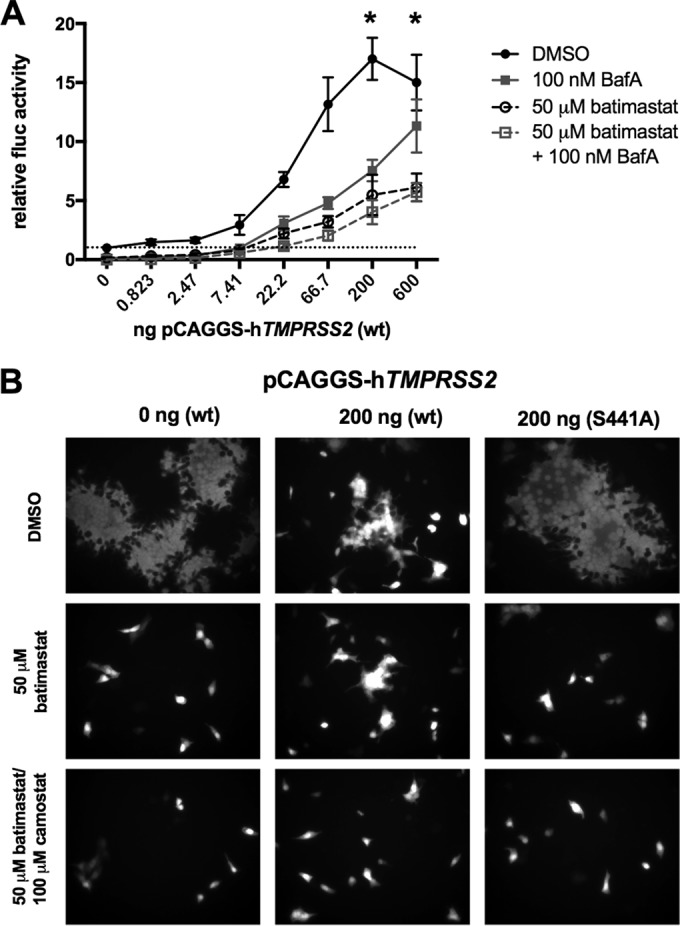FIG 7.

TMPRSS2 is an alternative to metalloprotease for JHM.SD entry. (A) TMPRSS2 rescues blockade of JHM.SD entry by bafilomycin A, batimastat, or both. HEK-293T cells cotransfected with pTK-mCeacam1a-4L and pCAGGS-hTMPRSS2-FLAG were pretreated with batimastat and/or bafilomycin A (final DMSO concentration, 1.5%) and infected with JHM.SD-fluc (MOI, 0.05 PFU/cell), and the treatment was maintained until the luciferase activity was assayed at 7.5 hpi. Using two-way ANOVA (n = 5), P values were <0.0001 for drug treatment, TMPRSS2 level, and the interaction between them; *, transfection levels at which Dunnett's multiple-comparisons tests showed significant differences from the baseline for all treatments. Data are representative of two independent experiments with n = 5 technical replicates. (B) TMPRSS2 inefficiently rescues MHV cell-to-cell spread in the presence of batimastat. HEK-293β5 cells cotransfected with pTK-mCeacam1a-4L and pCAGGS-hTMPRSS2-FLAG or pCAGGS-hTMPRSS2-S441A-FLAG were infected with rA59/SJHM.SD-EGFP (MOI, 0.1); at 2 hpi, the medium was replaced with medium containing DMSO, batimastat, camostat, or both, as indicated (final DMSO concentration, 0.1% for all treatments), and syncytium formation was assessed at 18 h.
